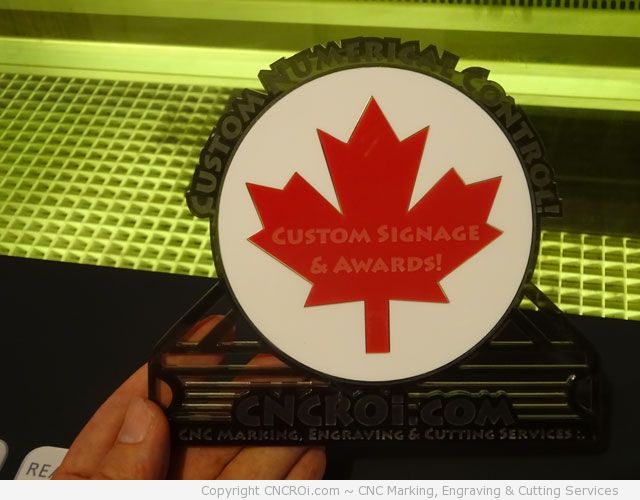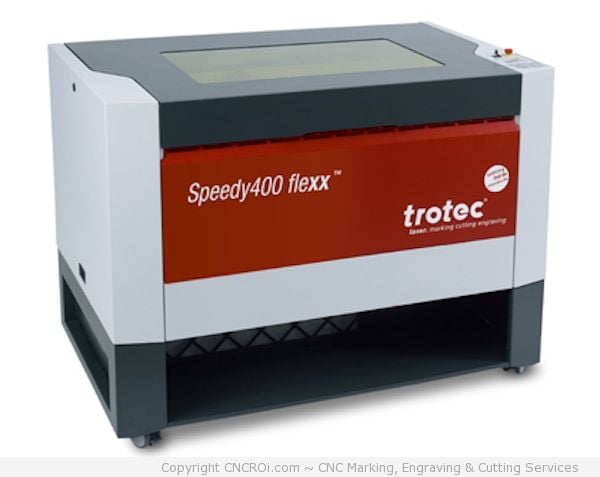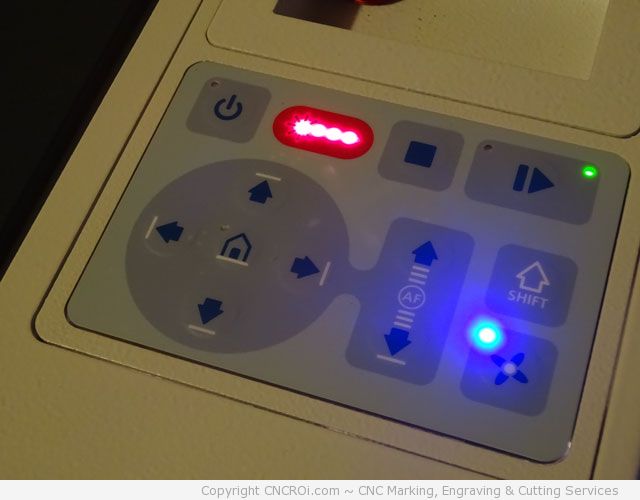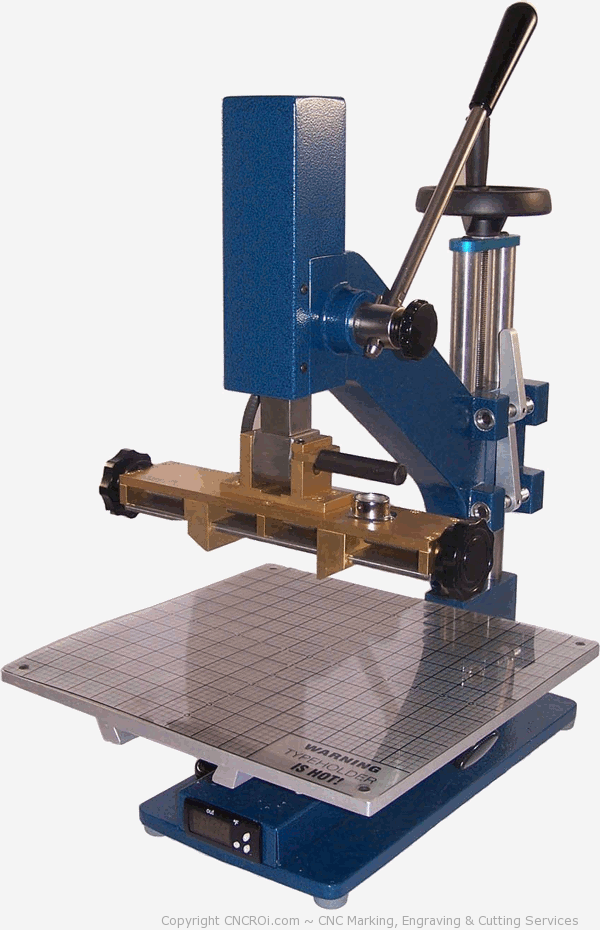Custom Numerical Control Return on Investment
What does CNCROi.com stand for? About a week ago, it was Computer Numerically Controlled Return on Investment but now it’s Custom Numerical Control Return on Investment!

What is CNC anyhow?
Computer Numerically Controlled or CNC essentially means you have a computer controlling a robot to do something, generally that something is very boring, repetitive and that’s why a robot is being used instead of a person. The advantage to this approach, other than absolute repeatability is precision. The above award/sign can be cut a thousand times, the first will be identical to the last while a human would be incredibly challenged to make just one of these identical to another even after making a thousand of them.
The CNC is always right is both a compliment and a curse… as it will do as you tell it without question, even if what you ask it to do isn’t what you REALLY want it to do!
Custom Numerical Control
I’ve been at this CNC stuff, completely self-taught mind you, since 2008. Since then, I’ve had the pleasure and headache of designing and creating using these powerful machines, from wood with a ShopBot Desktop to Metal with a Bystronic BySprint Fiber and everything else with our Austrian CNC laser. These machines are awesome as is their versatility and the creative force that they can unleash.

This is what we use to cut metal with!
I think the “Computer” in CNC isn’t actually a valid one anymore, I prefer to use Custom as that’s what these machines do, they transform a solid block of aluminium, stainless steel, wood, acrylic, laminate… even granite and stone… into something not possible using other methods. They are CUSTOM creating and the fact that a computer is used to control these machines has very little significance as, at the end of the day, it’s the designer who tells the computer what to do using their design, the computer is only a middle man to translate idea into code for the CNC to cut from.
Challenges of CNC’ing
CNC’ing isn’t without its challenges though, each machine has its place in the shop. It depends on material, application and intended use of the finished custom project we build. For instance, we could technically cut acrylic using our ShopBot CNC router but then we’d have to flame polish it afterwards for a nice edge, something our Austrian CNC laser does automatically.

If that acrylic was 10 cm thick though, the CNC laser would not be a good choice as it would burn the heck out of it at that thickness and the results would take very long and be inconsistent. That’s when you want to use a router bit over a laser beam, all things being equal. The same can be applied to wood, some stuff out there is incredibly dense and a client wants a consistent even engraving, if the scale makes sense, the CNC router is a better tool, where you lose out on resolution (round bits are bigger than a beam of light), you gain in z-axis (up and down) precision which is something the laser can’t do.
Custom Numerical Control Return on Investment
We recently quoted a job using a CNC router that we ended-up, after trial and error, moving over to our CNC laser. Why? For that particular material, the results were faster and better. If we only had ONE CNC machine type, we would have been “stuck” using the router but having a wide variety of options on the table allows us to tailor our designs and how they are produced for optimal time usage which saves you money. That’s what Return on Investment means in a production setting.

If a customer had a custom wooden plaque that needed to be laser engraved but was damaged or worn-out with a nice beveled edge, you’d have two choices, either make a “flat” one with the laser than use a manual router to bevel the edges OR using a CNC router to cut out a new one and then stick it in the laser. Let’s say to complicate things it had a matching stainless steel front that needed to be annealed… with the spacing between the two being lifted by a quarter-inch (6 mm). This has gone from EASY to HARD but with the right equipment and design process, this is just as easily done as the simpler model, production just needs a few extra steps.

Hot stamping, cold debossing machine… and SO MUCH MORE!
We have a variety of tools here, not just CNC, for instance our hot press we can make custom aluminium dies for putting foil onto everything from wood to paper, acrylic to leather. We also have invested into metal forming equipment from brakes and sheers to rolling so projects aren’t stuck in the 2D world.
There are a lot of possibilities that occur when you mix and match all these equipments together, both manual and CNC but at the end of the day, they all lead to the same result. A customer happy with their CUSTOM project built to their specs and on budget and time.